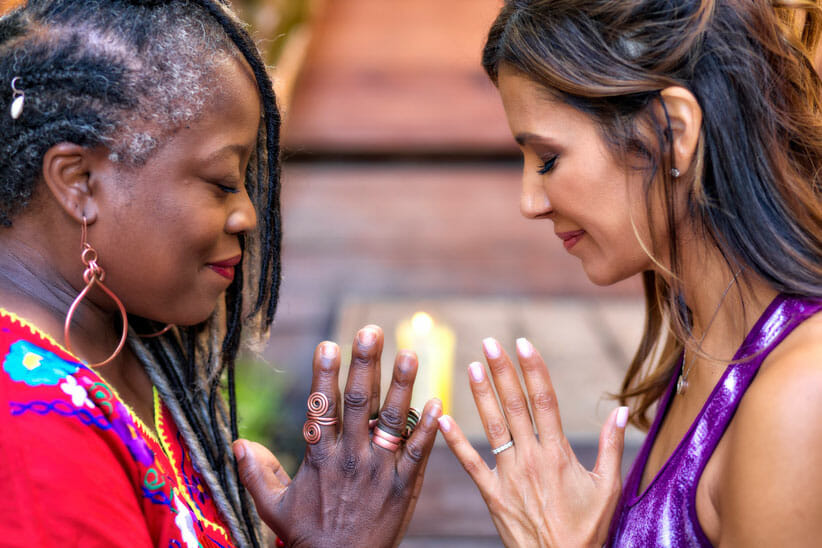
The Dark History of Pregnancy Health
Prenatal Yoga is a beautiful format to teach. I love the sense of connection, community, and safety in the room. In 2013, I led my first pre and post-natal yoga teacher training. In preparation for this, I wanted to learn more about and to share a timeline of the history of pregnancy health and women’s health in the United States related to pregnancy. After all, it was not so long ago that women were given laughing gas (nitrous oxide) to deliver babies, while being strapped down onto hospital beds. This is in stark contrast to the essential oils, soothing oceanic sounds, and flameless candles that may people use today (when these practices are integrated).
In digging a little deeper into the history of pregnancy health, there are some very ugly chapters that many do not know about. As a little girl I was taught the words “lest we forget” in reference to the Holocaust and the atrocities committed, some of which were at the hands of Doctors. I now feel a responsibility to shine a light on some of the uglier parts of American women’s history related to pregnancy, so that we do not forget how we arrived here.
Every time I lead a pre and post-natal teacher training, I pause to say a prayer for the women who were victimized by Doctors and systems that should have protected them. If we are to progress as a society, women need to come together for education and change. The community of women that surround and support me are my friends and my teachers, and I learn from them each day. One of these beautiful women is an amazing doula, midwife, life coach and advocate for women’s rights, Haize Hawke Rosen. Haize has contributed her voice to this piece and together we represent different elements of the BIPOC experience. Here is our brief look at our nation’s experience, lest we forget…

Haize Hawke Rosen and Desi Bartlett
Consent—the Lack of—in the 1800s
Dr. J. Marion Sims was originally born in South Carolina, and later moved to Louisiana. While in Louisiana, Dr. Sims worked as a gynecologist, specifically with a minimum of 10 black female slaves. During this time, slave owners wanted the female slaves to bear children, that they might continue the lineage of bondage. It was from this heartbreaking tradition that Dr. Sims decided to not only work with enslaved women, but to focus intently on repairing vesicovaginal fistulas (VVF) and rectovaginal fistulas (RVF).
Dr. Sims did not record all of the names of the women that he experimented on, but did refer to three women, Lucy, Betsy, and Anarcha. Anarcha was a seventeen-year-old slave who was in labor for three days, which left her with both a VVF and RV fistula. Dr. Sims performed no less than 30 surgeries on her in an attempt to repair the fistula. Anarcha was stripped of human dignity as each of these procedures was performed while she was naked in front of various male white doctors. Anarcha did not give her consent because at that time, her consent was not needed. Because Anarcha was seen as someone’s property, she also was not given any anesthesia whatsoever, for all 30 surgeries.
Eventually, Dr. J. Marion Sims, repaired Anarcha’s fistula, and as a result, he was called the Father of Gynecology. A statue was erected for Sims in NYC, where he spent he spent the later part of his life. The statue was not taken down until 2018. Every time that I teach a prenatal yoga course, I ask the participants to pause and say a prayer for all of the women who were used for medical experimentation. These women were not given the opportunity to consent (or not), nor were they treated humanely. My heart goes out to them and I send peace to each one through prayer.
The Eugenics Movement and Redlining in the 1900s
The Eugenics Movement refers to the practice of ensuring that only women who are “fit to reproduce,” have the right to bear children. As recently as the 1950s, black women were sterilized without giving their consent. Eugenics fell out of favor because Hitler used it to promote his racist agenda against the Jews. But in the 1960s, neo-eugenics arose with the specific intention of reducing the amount of blacks receiving public assistance. The statutes that had been put into place prior to World War II were used to continue this practice of deciding who was fit to reproduce.
The Jim Crow laws lasted until the mid-1960s—these kept blacks separate from whites after the abolitionist movement, and included very specific geographical delineations between neighborhoods. The policy known as “redlining” refers to the segregation efforts of the Federal Housing Administration in which they refused to insure mortgages in and near African American neighborhoods. During this time, the FHA was subsidizing builders who were mass producing subdivisions for whites and required that none of the homes be sold to African Americans.
This is a clear example of institutional racism in our country since these lines were drawn with the intent to ensure that blacks were not able to purchase property in specific neighborhoods. White dominance was written into these laws that dictated “separate but equal” conditions for blacks and whites. White neighborhoods were more affluent and had better conditions in the hospitals and healthcare system. The black hospitals had higher risk of infant mortality, maternal death during delivery, and many black women were given significantly less pain medication than their white counterparts. Many white doctors and nurses believed that the pain threshold was higher for blacks because the white medical staff thought that black people have thicker skin.
The 1960s were not that long ago and when we look at the Civil Rights movement and the work of Dr. Martin Luther King Jr, and others, we can see that the black community was crying out for equality. The African slaves were brought over in chains at the same time that many European settlers came to the U.S., and many people fought against the dream of equality. The system was built on the reality that African slaves arrived here in chains, and European settlers did not, and the gulf of the disparity must be recognized if we are to understand the insidious role of systemic racism in women’s health.
Racism and Division in the 2000s
In 2008, the United States elected the first African American president, Barak Obama. With his message of hope, came a new chapter for the American people. Finally, there was diversity in the highest office in the American government. However, there were still people who could not accept or respect the elected official’s family, and a governor’s wife called First Lady Michelle Obama, an ape in a dress. Not only did the racism continue into the turn of this century, but there were still those that saw black Americans as less than human.
This hatred of “otherness” is still reflected in women’s health and in pregnancy health. To this day, there are still those that think that black women literally have thicker skin and do not need as much pain medication as white women. The rate of breast cancer amongst black women is higher than the national average, and the morbidity rate is higher as well. Black women receive less prenatal and neonatal care on average, and this is all just on a clinical level. On a personal/social/emotional level, there was recently a black woman quoted as saying that she dresses up to go to the OB/GYN in hopes that she will be treated better. The fallout from redlining is still being reflected in the current numbers of poor birth outcomes and high mortality and morbidity rates in African American women and babies. African American mothers are 2-3 times more likely to die from pregnancy related causes than their white counterparts. African American babies have more than twice the rate of mortality than white babies. Something must change.
Our history has brought us to this day, when men, women, and children of every race witnessed the George Floyd as he cried out for his Mama. His cries called out to the heart of all mothers everywhere.
Speaking up Against Injustice
As teachers of prenatal yoga and philosophy, it is up to each one of us to speak up against injustice. It is up to each of us to send prayers to the slaves that were experimented on, to teach the truth of our history, and to make sure that there is real, concrete change. Some things that you can do to help enact change in women’s health and pregnancy health include:
- Share the message of black doulas and midwives on your social media platforms.
- Study why there is still a huge disparity in our health care system.
- Vote for leaders who will fight against systemic racism.
- Use your voice and when you see racism in any venue, especially in a studio setting, speak up and let people know, “not in my house.”
- Celebrate cultural differences.
- Check yourself and your own cultural biases and educate yourself on our nation’s history.
- Be an example of inclusivity, speak to everyone in the room and stay sensitive to different experiences.
- Lead with compassion.
Call to Change
Now is the time to make a change, and to realize that BIPOC people have a unique experience of pregnancy health and the journey of motherhood. The fear of mortality is real, the stress of feeling “other” is real, and it is up to us as a community of women to speak up for one another. In the words of Dr. Martin Luther King Jr, “History will have to record the greatest tragedy of this period of social transition was not the strident clamor of the bad people, but the appalling silence of the good people.” May we all use our voices to empower one another and to fight injustice everywhere.
Desi Bartlett MS, CPT, has been teaching health and wellness for more than 20 years. Originally from Chicago, she has a degree in kinesiology and her master’s degree in corporate fitness. Desi holds advanced certifications in Yoga, personal training, group fitness, and is a certified pre- and post-natal fitness specialist.
